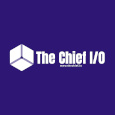
In the advancement of the recent technology space, there have been some excitements in data science, deep learning, artificial intelligence, and big data. These advancements have led to the development of a dynamic ecosystem for data analysis. However, data analysis became more complicated as the data increased and there was the need to bring in new algorithms relating to machine learning to help data scientists have a better analyzing experience. MLOps was birthed from the development of these algorithms since it was required to deploy resources, version codebases, integrate data, and even test procedures. Since then, it has been widely used across several industries.
In simple terms, MLOps is the adaptation of DevOps principles in solving Machine Learning problems. Over the years, these methods respond to the growing needs of several companies to conduct researches, analysis, data processing in adopting reliable ways to carry out deployment, development, and control of the specified Machine Learning system. Also, with MLOps, it is possible to provide end-to-end solutions from a Machine Learning development process to design, build, and manage efficient ML-powered software.
In considering unifying software releases and a machine learning cycle, then MLOps is a good solution. It also enables automated testing of machine learning artefacts, for instance, data validation, machine learning model testing as well as integration testing.
Some relevant advantages of MLOps include the following:
- Enabling the application of agile principles to Machine learning projects
- Supporting machine learning models and datasets to build the required first-class models within the CI/CD systems
- Enabling the reduction of technical debt across the utilized machine learning models.
In MLOps implementation, it is expedient to understand the basic approach and it is encompassed in the broad phases. These are phases that enhance the operation of MLOps in different machine learning applications and they include:
- Designing ML-Powered Applications: This phase is built to cater to business concerns, data understanding, and ML-powered software. Here, users are identified, a machine learning solution is designed, and then finally further into the project development. Also, the available data will be inspected if it can be used to train the model and specify functional and non-functional requirements of the model.
- ML Experimentation and Development: This second phase is built to verify the applicability of the machine learning model in the problem at hand. It is done by implementing a Proof-of-Concept (POC) for the ML Model and at the end attain a stable model to run in production.
- ML Operations: This is the final phase in MLOps activities and it has one task which is to deliver the ML model in production from the previous phase using DevOps activities. These activities include testing, versioning, continuous delivery, and monitoring.
Each of the phases connects with each other and require a previous phase output to make the next phase functional.
There is a tendency to confuse MLOps and AIOps. While there are some common characteristics between the two, MLOps and AIOps are two different domains, are applied differently, and serve different goals.
AIOps, sometimes referred to as Artificial Intelligence for IT Operations or Algorithmic IT Operations is a term invented by Gartner in 2016 as an industry category for Machine Learning analytics technology that enhances IT operations analytics.
Finally, we must understand that MLOps is a new field, so there are no defined standards and tools within a short time as there are emerging technologies trooping out. There are diverse resources and repositories that can be used in implementing and studying MLOps best practices and products.
Get similar stories in your inbox weekly, for free
Share this story:

The Chief I/O
The team behind this website. We help IT leaders, decision-makers and IT professionals understand topics like Distributed Computing, AIOps & Cloud Native
Latest stories
HIPAA and PCI DSS Hosting for SMBs: How to Choose the Right Provider
HIPAA protects patient data; PCI DSS protects payment data. Many small and mid-sized businesses now …
The Rise of GPUOps: Where Infrastructure Meets Thermodynamics
GPUs used to be a line item. Now they're the heartbeat of modern infrastructure.
Top Bare-Metal Hosting Providers in the USA
In a cloud-first world, certain workloads still require full control over hardware. High-performance computing, latency-sensitive …
Top 8 Cloud GPU Providers for AI and Machine Learning
As AI and machine learning workloads grow in complexity and scale, the need for powerful, …
How ManageEngine Applications Manager Can Help Overcome Challenges In Kubernetes Monitoring
We tested ManageEngine Applications Manager to monitor different Kubernetes clusters. This post shares our review …
AIOps with Site24x7: Maximizing Efficiency at an Affordable Cost
In this post we'll dive deep into integrating AIOps in your business suing Site24x7 to …
A Review of Zoho ManageEngine
Zoho Corp., formerly known as AdventNet Inc., has established itself as a major player in …
Should I learn Java in 2023? A Practical Guide
Java is one of the most widely used programming languages in the world. It has …
The fastest way to ramp up on DevOps
You probably have been thinking of moving to DevOps or learning DevOps as a beginner. …
Why You Need a Blockchain Node Provider
In this article, we briefly cover the concept of blockchain nodes provider and explain why …
Top 5 Virtual desktop Provides in 2022
Here are the top 5 virtual desktop providers who offer a range of benefits such …












